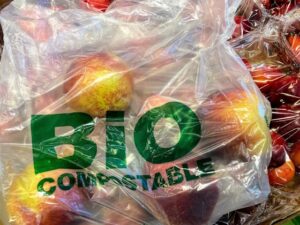In the busy environment of restaurant kitchens, food scraps are an inevitable byproduct of preparing delicious meals. However, with a little creativity and resourcefulness, these leavings can surprisingly be repurposed into culinary delights, reducing waste and enhancing sustainability practices. Below are a few innovative ways restaurant kitchens can repurpose food remains across different food groups
Fruits
Citrus scraps
After zesting or peeling citrus fruits, such as lemons, limes, and oranges, consider saving the leftover pulp and juices. These can be used in cocktails to add a zesty twist or as a bar garnish to enhance presentation. Additionally, the pulp can be utilized for back-of-house service, such as marinating meats or steeping sauces with vibrant citrus flavors.
Fruit peels
Rather than tossing fruit peels into the compost bin, transform them into tasty syrups or infusions. For example, orange peels can be simmered with water and sugar to create a fragrant syrup for cocktails or desserts. Similarly, lemon peels can be saturated in vinegar to make a tangy dressing or combined with coarse salt to make homemade cleaning solutions.
Vegetables and herbs
Wilted produce
Instead of throwing out wilted vegetables and herbs, repurpose them in a hearty broth or stock. Combine leftover vegetables, such as carrots, celery, onions, and herbs, with water and spices to create a base for soups, sauces, or risottos. Not only does this reduce food waste, but it also adds depth to your culinary creations.
Herb stems
Don’t overlook the stems of herbs, as they contain plenty of richness. Chop herb stems finely and incorporate them into dressings, marinades, or sauces for an extra burst of freshness. Alternatively, infuse herb stems in oil or vinegar to create aromatic condiments for drizzling over food or dipping bread.
Proteins
Protein trimmings
Rather than discarding unused or trimmed portions of proteins, such as chicken, beef, or fish, repurpose them in rich and flavorful broths. Combine protein trimmings with aromatics, such as onions, garlic, and herbs, and simmer them together to extract their savory profile. This versatile broth can be used as a base for soups, stews, or sauces, adding layers and complexity to your dishes.
Leftover cooked protein
If you have leftover cooked proteins, such as roasted chicken or grilled steak, consider transforming them into hearty fillings for sandwiches, wraps, or salads. Shred or chop the proteins and mix them with complementary ingredients, such as vegetables, herbs, and sauces, to create delicious and satisfying meals for your customers.
Carbs
Bread scraps
Instead of tossing out bread ends or imperfect slices, repurpose them into crunchy croutons or breadcrumbs. Cut the bread into bite-sized cubes, toss them with oil and seasoning, and bake them until golden and crispy. These homemade croutons are perfect for adding texture and flavor to salads, soups, or pasta dishes. Similarly, crumble bread into fine breadcrumbs and use them as a coating for fried or baked foods, such as chicken tenders or eggplant parmesan.
Unused raw dough
If you have leftover raw dough from pastry or bread making, get creative with its use. Roll out the dough and stuff it with savory or sweet fillings to create hand pies, turnovers, or empanadas. Alternatively, shape the dough into knots or twists, brush them with garlic butter or cinnamon sugar, and bake them until golden. These versatile treats are sure to delight your customers and minimize leftover food in your restaurant.
By implementing these creative tips for repurposing food scraps, restaurant kitchens can minimize waste, maximize taste, and contribute to a more sustainable food system. With a little ingenuity and resourcefulness, every ingredient can find a new purpose, adding value to both the kitchen and the plate.




